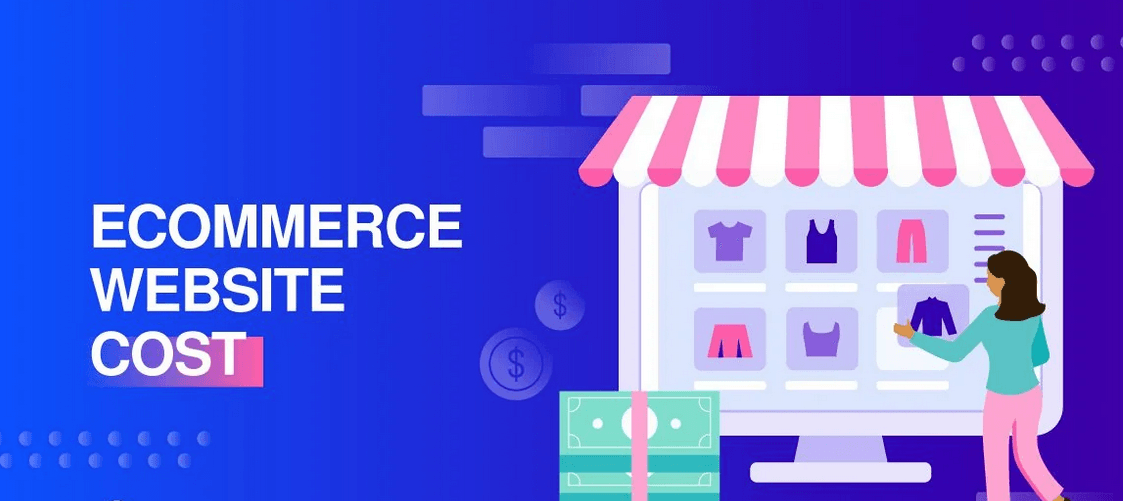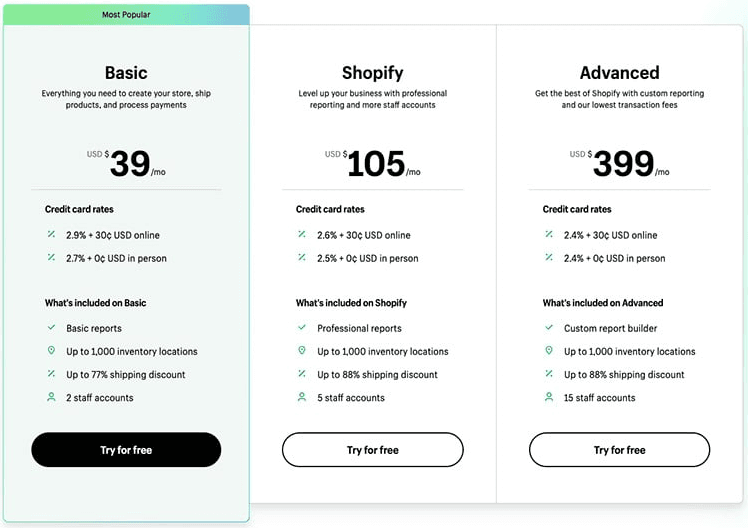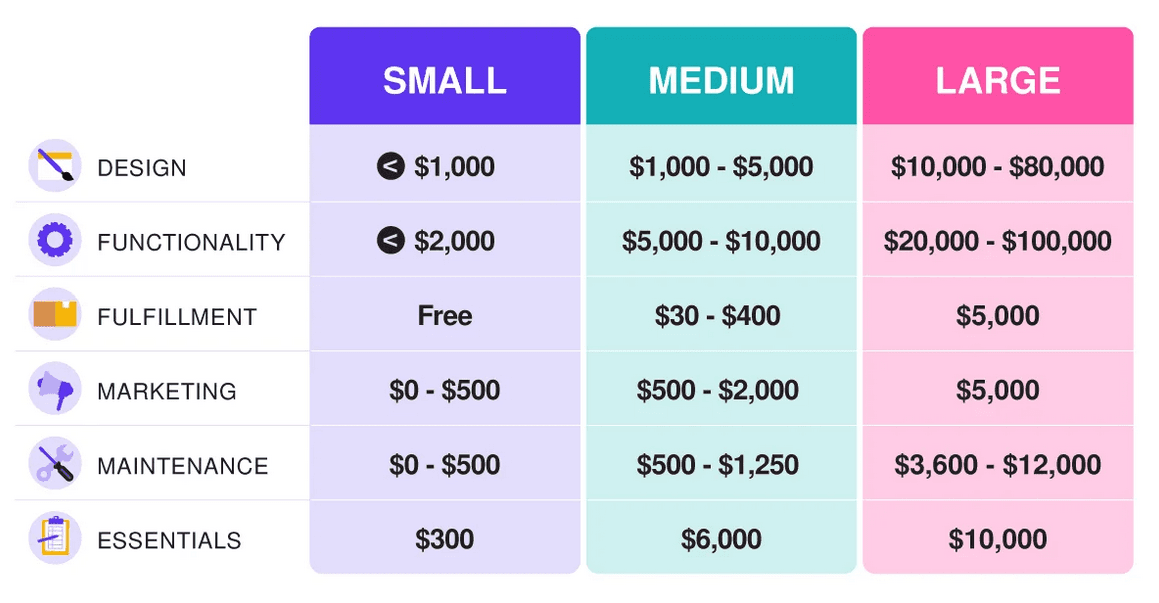Headless Shopify Pricing: Costs to Go Headless with Shopify

Smaller brands, from our experience, tend to find traditional ecommerce platforms like monolithic Shopify advantageous for their quick online establishment. Meanwhile, larger brands and established enterprises seeking omnichannel personalization and advanced flexibility often lean towards headless solutions.
While headless ecommerce platforms like Shopify have numerous advantages that can benefit your business, they may sometimes cost more than traditional ecommerce solutions. Understanding their pricing can help you choose a more cost-effective solution for your business.
Are you considering moving to a headless solution to provide your customers with more omnichannel experiences? In this article, we examine the headless Shopify pricing model to help you determine how much it will cost to go headless with Shopify.
Headless Shopify Pricing: What Is the Cost of Headless Shopify?
Starting your online shop requires a budget. So, you will need to know how much it costs to go headless with Shopify to create the right budget.
There is no fixed amount for starting a headless Shopify store. However, various costs go into the pricing. Understanding these different costs can help you create a precise estimate for your total budget. Also, notice that building a successful headless web shop involves ongoing costs beyond the initial development, such as hosting, domain registration, and marketing.
Let's take a look at the various costs of starting a headless Shopify store.

The cost of building your ecommerce website
Going headless with Shopify requires creating a custom front-end layer and an API layer to pull data from your back-end platform. At least two teams must work on the project to create the webshop. Let's break it down:
A team of front-end developers can use technologies like ReactJS, Angular, Vue.js, or any other framework to build a custom front-end. The front end constitutes the user interface (UI), which interacts with Shopify's APIs to fetch product information, handle cart functionalities, and process transactions.
A back-end development team sets up the headless ecommerce Shopify platform to suit the functionalities crucial to your brand. This also typically involves integrating the back-end solution with other essential headless solutions like content management systems (CMS).
Another team sets up the shop’s API Integration. This involves customizing Shopify's API (Application Programming Interface) functionality to allow communication between the Shopify back end and the custom front end.
All these processes go into building the new headless webshop. Whether you work with an in-house team of developers or hire an agency, you must pay the developers. Often, you’ll need to hire an agency specializing in headless Shopify development because the process requires high-level development skills.
Building an online shop for an enterprise can be relatively complex and may cost anywhere from $50,000 to $500,000 or more.
The process is complex because it involves rebuilding all the ecommerce functionalities of your online shop. It also involves rebuilding or reconfiguring all the apps and plugins used in your monolithic Shopify platform.
Then, there is the process of integrating your Shopify platform with essential third-party solutions to create a unified, seamless experience for your shoppers.
Depending on your specific requirements, Developers can typically take three to six months or longer to complete this process. Similarly, your customizations and integrations or specific needs will determine the exact amount of money spent on building your webshop.
Software costs
Aside from the agency fees or developer wages, you must buy various headless software packages to build your shop.
Going headless means moving away from Shopify’s monolithic platform or any legacy solution that you’re currently using to a headless one.
The cost of your new headless Shopify software solution is at the core of your headless Shopify pricing. In this case, it is the amount you spend buying a new Shopify Plus package. Indeed, you might be able to start a headless shop with the standard Shopify plan, but this may not be ideal, as we will explain later in this discussion.
The Shopify Plus plan starts at $2,000 monthly for standard setups and integrations, which should be sufficient to get you started.
The platform is robust, with powerful tools for running and supporting the growth of your online store. However, it is not built for content management, so you will need a suitable headless CMS (content management system) to work with it side by side.
The best headless ecommerce CMS may come down to your preferences, but a leading brand like Contentful is tried and tested and unlikely to disappoint.
Whatever you choose, keep in mind that the headless CMS cost will vary depending on your website’s complexity and the provider you choose.
It is also worth noting that many CMS software vendors offer free plans that you could consider. Some free plans may have enough features to get you started, presenting a good opportunity to save on that cost. However, prepare to pay if you need more features.
From there, it is up to you to decide which other software solutions you need in your stack. Some may be free, but for the premium ones, their fees will add to your Shopify headless commerce total cost.
Website maintenance costs
Just like your car needs regular maintenance to remain sound, so does your ecommerce website. A headless ecommerce site will require more maintenance than a regular one.
Website maintenance costs are unavoidable and crucial to your headless Shopify pricing.
A headless ecommerce store has separate codebases for the back and front end. These two sides of the site communicate via an API layer, which must be frequently maintained to ensure seamless communication.
Therefore, you must have an expert maintaining the codebase to keep your ecommerce website running without incidents.
Whether you choose a senior in-house developer or an agency like Endertech, the fees will add to your headless Shopify pricing.
Additionally, flexibility is one of the main advantages of headless commerce. Since the decoupled architecture allows you to add new features and components to your front end on an ongoing basis, you must add the cost of each additional feature to your overall Shopify pricing.
How much this will cost depends on the number and cost of each additional feature. Nonetheless, the bigger your brand, the more you are likely to pay.

Do You Need Shopify Plus to Go Headless?
Shopify Plus has many great resources for building a headless store. This is the platform that Shopify recommends if you want to go headless with your online store. But what if you wish to build your headless webshop on the traditional Shopify offering that you already have?
Can you build a headless ecommerce Shopify store without upgrading to Shopify Plus? The short answer is yes; it is entirely possible to create a headless store on Shopify's regular plan.
However, while you do not necessarily need Shopify Plus to go headless, we do not recommend that option. And we will explain why in a bit.
Shopify offers different membership levels that support the creation of a headless store, but these come with various restrictions that can hinder your headless experience. Some headless Shopify features are exclusive to Shopify Plus.
Let’s look at these restrictions in detail, one at a time.
Limitations of a Standard Shopify Headless Store
Standard Shopify plans have three main limitations that make them unideal for building a headless online store on the platform.
Let’s take a look.
Checkout page restrictions
When building a headless ecommerce store, you typically have the freedom to customize your storefront in many ways. This is a crucial feature when it comes to headless commerce.
However, this is not entirely the case with Shopify. The vendor restricts editing their checkout page for users with plans other than Shopify Plus.
So, if you build your headless site with a regular Shopify plan, you will have to use the Shopify checkout page as it is without custom modifications.
You may agree that the checkout page looks great as it is. Nonetheless, the restriction beats the logic behind going headless in the first place: being able to create a fully customized customer journey across your store.
Restricted access to coupons
Customers love coupons, and running them on your website can significantly drive sales. Unfortunately, Shopify restricts access to the coupon API endpoint for merchants who have not upgraded to the Shopify Plus plan.
This restriction prevents you from giving your shoppers the much-desired coupon-based discounts, effectively cutting out revenue from coupon-based sales.
While this restricted access to coupons is a significant limitation, it has a workaround. You can use a plugin to make store-wide or per-product discounts and run flash sales on your headless website.
This solution should help you hold a sale, but notice that it does not solve every situation. If you want to overcome every restriction, jumping aboard the Shopify Plus bandwagon may be in the cards for you.
Missing storefront API for cross-domain user authentication
A headless ecommerce Shopify store has a decoupled architecture, meaning the customer-facing presentation layer is separate from the ecommerce engine in the back end.
In other words, you have a website with two separate domains that must exchange data seamlessly to communicate as a unit.
When it comes to potentially sensitive information like account details and login information, the system requires an authenticated handshake to let the sensitive details move from one side to the other.
This is where the Shopify API layer comes in. It helps tell the Shopify back end that the front-end layer is trusted, thereby allowing it to fetch the required user information.
When a customer makes repeat purchases, for instance, the API can sync the customer’s account details, including their address, email address, and payment information. With the system automatically associating the customer with their data, they can shop without entering the information afresh.
Unfortunately, this option is only available for Shopify Plus merchants.
If you build your headless store on the standard Shopify plans, your customers will have to re enter their details every time they purchase on your site. Additionally, customers will be unable to see their purchase history or use their existing payment details on your platform.
Such inconveniences can cost you important customers who will seek a more unified experience elsewhere.
If you don’t want to struggle to retain customers after their first two purchases, you may be better off building your headless store on Shopify Plus.
Summary of Headless Shopify Pricing
So, what have we learned in this write-up? All the important details regarding the headless Shopify pricing model. Specifically, we have noted that various costs constitute the overall cost of starting a headless Shopify store. These include:
The cost of building your ecommerce website
Software costs
Website maintenance costs
We have also learned that you can start a headless Shopify store at any subscription level, including a basic Shopify plan. However, this option has three main limitations: missing storefront API for cross-domain user authentication, restricted coup access, and checkout page restrictions.
Next, we'll delve deeper into headless Shopify and provide you with the best practices for opening and running one successfully.
Want to build a successful headless Shopify store? The team of headless Shopify experts at Endertech can help. Contact us for a custom solution.
